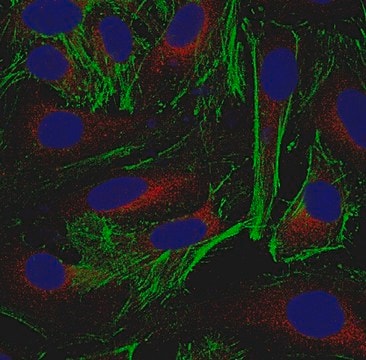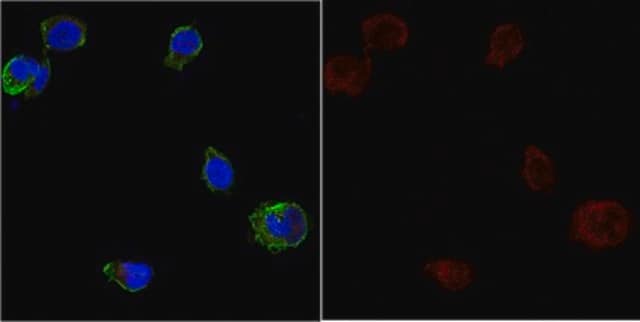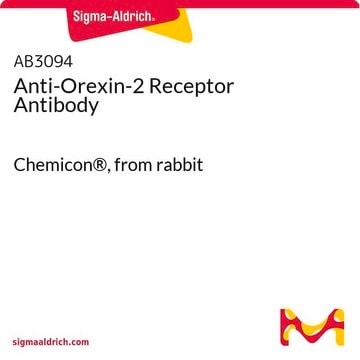ABS1652
Anti-GSTA4 Antibody
serum, from rabbit
Synonym(s):
Glutathione S-transferase alpha-4, Glutathione S-transferase A4, Glutathione S-transferase Yk, GSTA4, GST 8-8, GST A4-4, GST K, GST Yk
About This Item
Recommended Products
biological source
rabbit
Quality Level
antibody form
serum
antibody product type
primary antibodies
clone
polyclonal
species reactivity
mouse, rat
technique(s)
immunohistochemistry: suitable (paraffin)
western blot: suitable
NCBI accession no.
UniProt accession no.
shipped in
dry ice
target post-translational modification
unmodified
General description
Specificity
Immunogen
Application
Western Blotting Analysis: A representative lot detected upregulated Glutathione S-transferase alpha-4 in liver cytosolic preparations from mice on high-fat diet (F) when compared with liver samples from mice on regular diet (Meakin, P.J., et al. (2014). Mol. Cell. Biol. 34(17):3305-3320).
Western Blotting Analysis: A representative lot detected upregulated Glutathione S-transferase alpha-4 levels in liver homogenates from mice fed on diets supplemented with the antioxidant butylated hydroxyanisol (BHA) (Chanas, S.A., et al. (2002). Biochem. J. 365:405-416).
Western Blotting Analysis: A representative lot detected purified rat liver GST K (YkYk) and kidney GST J (YkYk), but not Ya, Yc, Yb1, Yb2, Yb3, Yf, or Yn subunits from other forms of purified rat GSTs (Hayes, J.D,, and Mantle, T.J. (1986). Biochem. J. 233(3):779-788).
Signaling
Oxidative Stress
Quality
Western Blotting Analysis: A 1:5,000 dilution of this antibody detected GSTA4 in 10 µg of rat kidney tissue lysate.
Target description
Physical form
Storage and Stability
Handling Recommendations: Upon receipt and prior to removing the cap, centrifuge the vial and gently mix the solution. Aliquot into microcentrifuge tubes and store at -20°C. Avoid repeated freeze/thaw cycles, which may damage IgG and affect product performance.
Other Notes
Disclaimer
Not finding the right product?
Try our Product Selector Tool.
Storage Class Code
12 - Non Combustible Liquids
WGK
WGK 1
Flash Point(F)
Not applicable
Flash Point(C)
Not applicable
Certificates of Analysis (COA)
Search for Certificates of Analysis (COA) by entering the products Lot/Batch Number. Lot and Batch Numbers can be found on a product’s label following the words ‘Lot’ or ‘Batch’.
Already Own This Product?
Find documentation for the products that you have recently purchased in the Document Library.
Our team of scientists has experience in all areas of research including Life Science, Material Science, Chemical Synthesis, Chromatography, Analytical and many others.
Contact Technical Service





![Anti-CD62E [ELAM-1] Antibody, clone 1.2B6 clone 1.2B6, from mouse](/deepweb/assets/sigmaaldrich/product/images/224/939/8a711839-25ef-4e45-badd-208503950c8a/640/8a711839-25ef-4e45-badd-208503950c8a.jpg)


